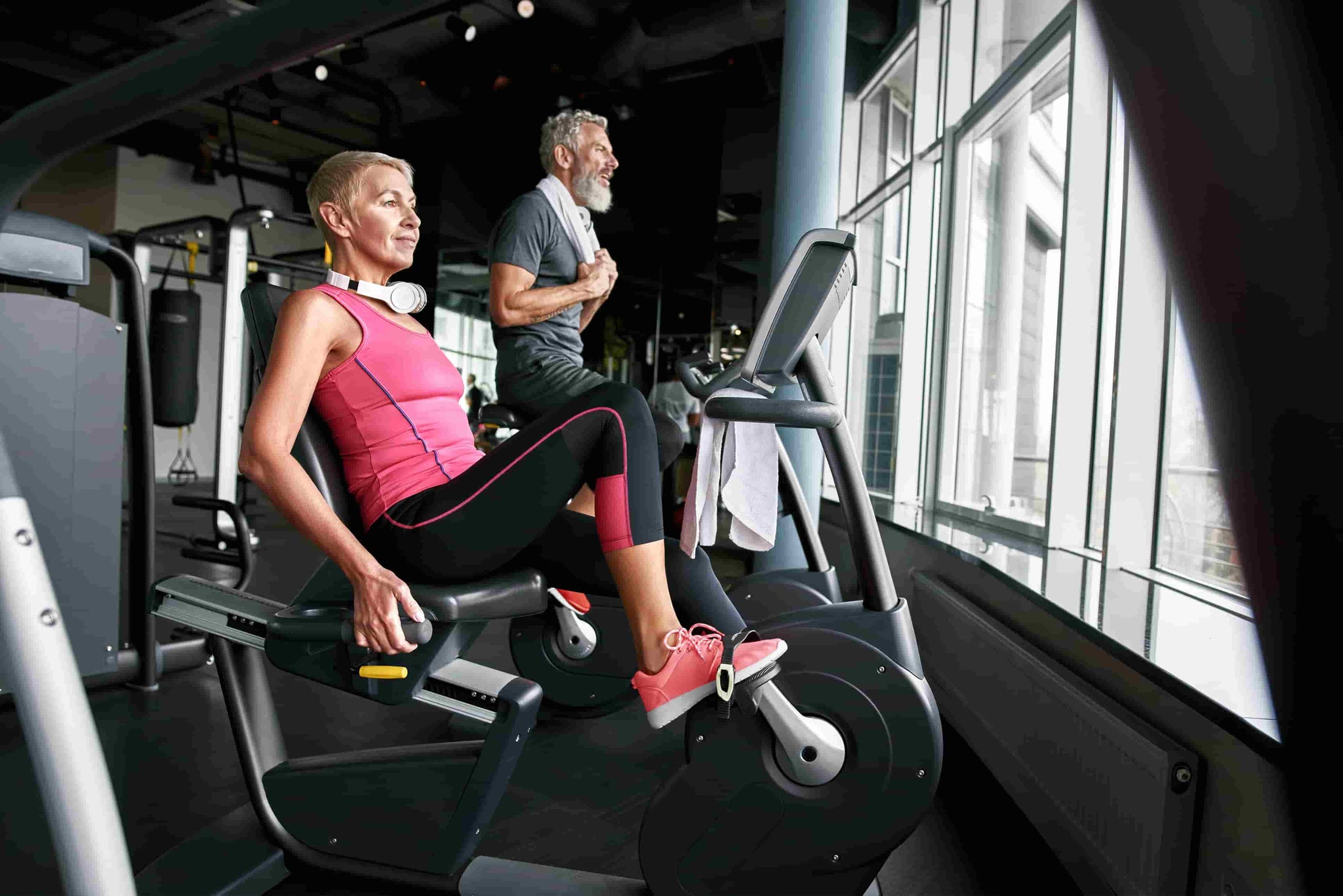What Is a Recumbent Bike?
Written by: Vanswe Fitness
Published on: May 07, 2025. Last updated: May 09, 2025

Recumbent bikes have become increasingly popular among fitness enthusiasts, seniors, and individuals recovering from injuries. Their unique design offers a comfortable, low-impact workout experience that appeals to a wide range of users. In this article, we'll explain what a recumbent bike is, highlight its key features and benefits, and help you decide if it's the right choice for your fitness journey.
Source: A study published in the International Journal of Sports Physical Therapy highlights that using a recumbent bike during rehabilitation significantly benefits joint range of motion, muscle strength, and cardiovascular fitness [1].
What Is a Recumbent Bike?
A recumbent bike is a type of bicycle where the rider sits in a reclined, almost laid-back position. Unlike upright bikes, which place the rider above the pedals, recumbent bikes feature a supportive backrest and pedals positioned in front of the rider. This ergonomic design reduces strain on the joints and back, making exercise more comfortable and sustainable.
Source: Research from the University of North Texas shows that the seat back angle of a recumbent bike significantly influences rider comfort and physiological responses, affecting the efficiency and experience of exercise [2].
Key Features of Recumbent Bikes
- Reclined Position: The seat is positioned lower to the ground and reclined, distributing body weight more evenly.
- Supportive Backrest: A large, cushioned backrest offers lumbar support, reducing stress on the spine.
- Forward-Facing Pedals: The pedals are located in front of the body, allowing a full range of motion for the legs while minimizing impact.
- Low-Impact Design: Recumbent bikes provide a smooth, joint-friendly workout ideal for people with mobility or joint issues.
- Versatile Models: They are available in both indoor stationary versions and outdoor road designs with two or three wheels.
These key points contribute to seven major benefits of using a recumbent bike.
What's a Recumbent Exercise Bike?
A recumbent exercise bike is a stationary version of a recumbent bike designed specifically for indoor workouts. Instead of being used on the road, it stays fixed in one place, allowing users to pedal in a reclined position to improve cardiovascular fitness, burn calories, and strengthen lower body muscles.
Thanks to its easy-to-use design, comfortable seating, and adjustable resistance levels, a recumbent exercise bike is a popular choice for home gyms, rehabilitation programs, and fitness centers. It provides all the benefits of a recumbent bike without requiring balance or outdoor cycling skills.
Key Points:
- Used indoors, typically in homes or gyms.
- Provides a low-impact, joint-friendly cardio workout.
- Ideal for beginners, seniors, and people with mobility challenges.
Source: A 2024 study published in Medicine and Science in Sports and Exercise confirms that recumbent cycling provides significant benefits for seniors, improving cardiovascular endurance, muscle strength, and balance while minimizing joint stress [3].
Who Should Use a Recumbent Bike?
Recumbent bikes are particularly suitable for:
- Mid Age & Seniors seeking a safer, more comfortable cardio option.
- Individuals with back, hip, or knee problems who need a low-impact exercise solution.
- Beginners who are new to exercise and want an easy, enjoyable start.
- Rehabilitation patients working on regaining mobility and strength.
Recumbent bikes are excellent for rehabilitation, weight management, and safe fitness for seniors. And when it comes to how to choose the best recumbent bike, make sure it matches your height, provides seat comfort, adjustable resistance, workout tracking, app compatibility, and fits well within your space for the best results.
Conclusion
A recumbent bike offers an outstanding combination of comfort, safety, and effective cardiovascular exercise. Whether you're looking for a joint-friendly way to stay active, recovering from an injury, or simply seeking a more comfortable workout option, a recumbent bike could be the perfect addition to your fitness routine. Consider your personal goals and needs to find the best model for you—and enjoy the ride!
Reference
- Lopes, A. D., Alouche, S. R., Hakansson, N., & Cohen, M. (2014). Electromyography during pedaling on upright and recumbent ergometer. International journal of sports physical therapy, 9(1), 76–81.
- Smith, J. C. (1990). The effect of seat back angle on responses during recumbent cycling [Doctoral dissertation, University of North Texas]. UNT Digital Library.
- Harwood, V., Logan, N. E., Baron, A., Richards, S., Dias, R., Seng, A., Jelfs, E., Clarkin, C. M., & Ward-Ritacco, C. L. (2024). Electrophysiological investigation of active-assisted vs recumbent cycling: A pilot study in healthy older adults. Progress in brain research, 283, 67–97. https://doi.org/10.1016/bs.pbr.2023.11.006
Latest Articles





